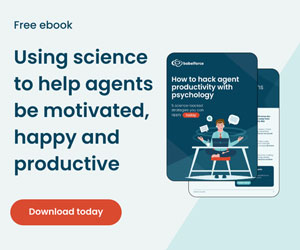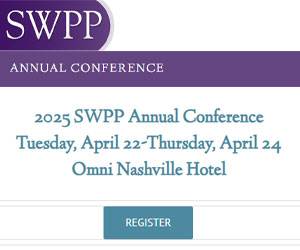How well do you use available customer feedback to improve agent performance? Whether it’s positive or negative, directly linking agents to what customers are saying can help to make sure everyone is pulling in the same direction.
So, what do you need to keep in mind to make sure this approach is managed effectively? Our Editor, Megan Jones, spoke to Brittany Hodak, Jeremy Watkin, Justin Robbins, Mike Aoki, Nate Brown, and Shep Hyken to find out.
How to Use Customer Feedback to Improve Agent Performance
DON’T: Reinforce the Wrong Behaviours
Don’t pass on positive feedback that encourages the wrong behaviours!
Unfortunately, customers can sometimes pass on good feedback even when agents have made a mistake, or gone outside of training or process, so be careful to look out for it, as Mike Aoki explains:

“You really don’t want to be sharing those moments where the customer says, “Thanks for putting through that extra credit” and you are sitting there thinking ‘The agent shouldn’t have done that’.
So, make sure to catch moments like that and only pass on the feedback where the process is right AND the customer is happy. That way, it’s reinforcing the right behaviours across your team.”
DO: Ask Customers “Would You Want to Work With This Agent Again?”
It’s about making sure the questions you are asking your customers are easy to feedback to your agents too, so don’t overcomplicate it!

“I love the survey question that some airlines are using right now – ‘Would you want to work with this agent again?’, with a simple yes/no response. This works nicely for two reasons.
The first, it’s a great boost for the agent when they can instantly see the majority of customers would be happy to work with them again.
Second, it’s such a quickfire question after every call that the agent will always act knowing they’re most likely going to be graded by the customer after that call – so it encourages them to always bring their best.” – Shep Hyken
DON’T: Allow for Any Imbalance Across Teams When Celebrating Great Customer Feedback
Publicly praising agents for wow moments is a great way to reinforce good behaviours. However, make sure feedback loops and celebrations are fair across all teams – and not just limited to a select few.
As, sadly, it can have the opposite effect if agents feel like the same teams are always getting shout-outs and they are always being ignored.
“Agents can quickly feel underappreciated and overlooked, like their contributions aren’t being seen.
Often, this is a communication issue and one that probably stems from a handful of team leaders not knowing how to share feedback with the right person to get included in the weekly round-up, for example, so make sure to regularly remind everyone how to get involved, so no one misses out.” – Brittany Hodak
There are a number of other ways contact centre leaders can be demotivating their agents. To find out more, read our article: 35 Surefire Ways to Demotivate Your Best Agents
DO: Look Out for Trends and One-Offs

Don’t share bad feedback in isolation. Look out for trends, as it might be symptomatic of a wider issue, as Jeremy Watkin explains:
“It’s easy to fall into the trap of looking at each piece of customer feedback in isolation and acting accordingly, but you regularly need to review what’s come in across the contact centre, so you can see, for example, if there’s actually been 100 complaints about that same issue and it stems from beyond the individual agent’s behaviour.”
Equally, you should double-check if it’s a one-off before you share negative feedback with the agent in question and compromise morale, as Mike Aoki adds:
“If a single piece of negative feedback comes in about an agent who’s normally very good at that area of the job, you have to ask yourself, is it worth the emotional energy and potential damage to the manager–agent relationship to bring it up? Or is it better to just let it go and keep an eye on it for the time being?”
DO: Make the Voice of the Customer Part of Agents’ Daily Lives – Not Just a One-Off Exercise

Give agents the ability to hear the voice of the customer first hand, as Nate Brown explains:
“It’s about really giving the agents ears to hear their own customer feedback, empowering them to tune into what the customer is thinking and feeling about the organization’s products and services.
They’re then not just waiting for that weekly, monthly, or quarterly performance review to be served that information. It’s part of their daily working life.”
A VOC button can really make a difference here, and this approach is explained in more detail in our article on Are You Embracing the Potential of Unstructured VoC Data?
I created a mini feedback form inside of our CRM and gave everyone a USB web key button.
It was just a little clicker, but whenever one of our agents got meaningful customer feedback as part of a customer service interaction, they could just hit the button, which would take them to a simple feedback form – including:
- What’s happening in this call?
- What type of feedback did they give you?
- How are they feeling right now?
If you are looking for ideas on how to improve your VoC surveys, read our article: 11 Best Practices for a Voice of the Customer Survey
DO: Celebrate Success Through Different Categories
When sharing customer feedback with agents, don’t just have a blanket approach. Think about how you can divide it up into subcategories for maximum impact.

“Coming up with just a few categories can really help to boost internal communications and agent engagement with the positive feedback coming through.
For example, ‘Let’s share our favourite customer review that we’ve got online’ or ‘Let’s share some feedback that our sales people heard out on the road’. It stops people zoning out and reinforces the idea that feedback doesn’t just come from one source.” – Brittany Hodak
DON’T: Dwell on the Past – Use Feedback to Encourage Better Future Interactions
When sharing negative feedback, don’t dwell on the agents’ failings, as Justin Robbins shares:

“Use it to focus the conversation forward on how the agent can positively change their approach for future calls.
Framing this feedback positively will help to keep communication open and prevent agents from feeling punished and shutting off from any potential learnings.”
For example, “Sophie, we recently got this feedback from somebody that you spoke to, and they said they really appreciated how you did A, B, & C when talking with them, but they didn’t like this [insert issue]. For your next calls, why not try…”
If you want advice on how to effectively deliver feedback to your agents, read our article: 10 Feedback Examples to Improve Contact Centre Performance
DO: Validate Negative Feedback Before Sharing It With Agents (Were They Doing the Right Thing and the Customer Just Didn’t Like It?)
The customer isn’t always right! So make sure you double-check why the customer is upset, before you pass that feedback on to an agent, as Mike Aoki explains:
“Before sharing negative feedback with an agent, double-check if they were in the wrong. Oftentimes, the agent did their job and the customer just didn’t like it – and there’s nothing to be gained from having that conversation with the agent, as they can’t learn from it or improve.
So, as a leader, always think “should I pass that along or not?”. It’s your job to filter out the feedback that is just noise vs. the feedback that will actually help their performance.”
Adopt a Thoughtful, Balanced Approach to Maximize Success
Effectively using customer feedback to improve agent performance requires a thoughtful, balanced approach that reinforces the right behaviours, empowers agents, and fosters a culture of continuous improvement.
By celebrating successes, addressing constructive feedback with a forward-looking perspective, and ensuring fairness in recognition, contact centre leaders can use customer feedback to truly motivate and engage their agents.
With thanks to the following people for sharing their thoughts and experiences for this article:
- Brittany Hodak, Keynote Speaker & Author of Creating Superfans
- Jeremy Watkin, Director of Customer Experience and Support at NumberBarn
- Justin Robbins, Founder & Principal Analyst at Metric Sherpa
- Mike Aoki, President of Reflective Keynotes Inc.
- Nate Brown, Head of CX Advisory for Metric Sherpa and Co-Founder of CX Accelerator
- Shep Hyken, Chief Amazement Officer (CAO) at Shepard Presentations LLC
If you are looking for more advice on gathering customer feedback and improving agent performance, read these articles next:
- 25 Good Examples of How to Collect Customer Feedback
- Effective Ways to Unlock Agent Productivity
- How to Take Your Performance Management to the Next Level
Author: Megan Jones
Reviewed by: Xander Freeman
Published On: 26th Mar 2025 - Last modified: 27th Mar 2025
Read more about - Call Centre Management, Agent Performance, Brittany Hodak, Customer Surveys, Feedback, Jeremy Watkin, Justin Robbins, Mike Aoki, Nate Brown, Shep Hyken, Top Story, Voice of the Customer





































